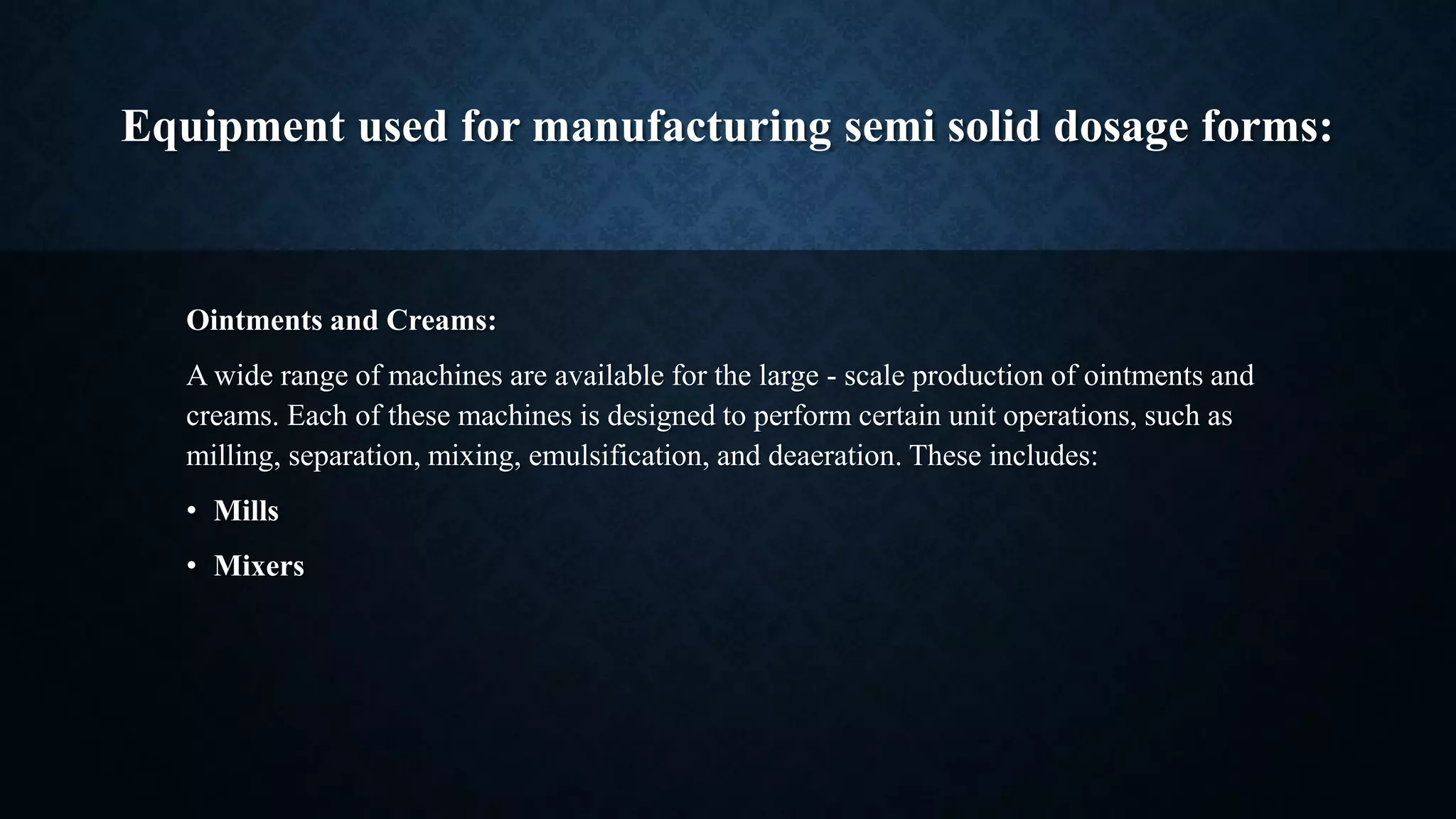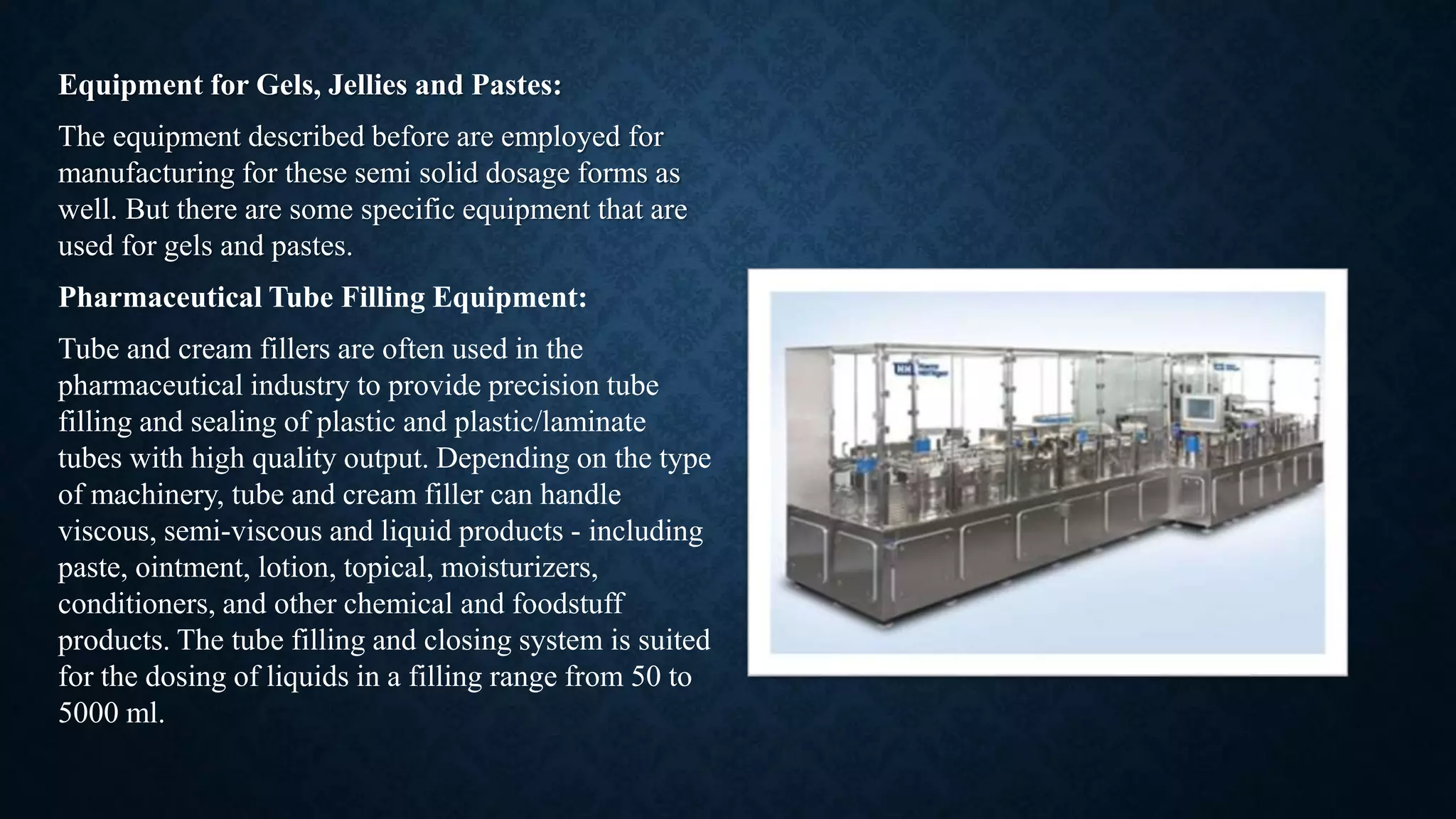This document discusses equipment used for manufacturing semi-solid dosage forms such as ointments, pastes, gels and jellies. It describes mills such as fluidized energy mills and roller mills that are used to mill ingredients. It also mentions mixers that are used for mixing, emulsification and deaeration in the production of ointments and creams. The document provides details on the manufacturing process and requirements for packaging and labeling of semi-solid dosage forms.

































![REFERENCES:
1. The International Pharmacopoeia - Ninth Edition. Topical semi-solid dosage forms 2020 [cited 2020 15 December].
Available from: https://apps.who.int/phint/pdf/b/6.2.1.8.Topical-semi-solid-dosage-forms.pdf.
2. Maqbool MA, Mishra MK, Pathak S, Kesharwani A, Kesharwani A. Semi solid dosage forms manufacturing: Tools,
critical process parameters, strategies, optimization and recent advances. Indo Am J Pharm Res. 2017;7:882-93.
3. Gad SC. Pharmaceutical manufacturing handbook: production and processes: John Wiley & Sons; 2008.
4. Lachman L, Lieberman HA, Kanig JL. The theory and practice of industrial pharmacy: Lea & Febiger; 1986.
5. Approach P. Equipments 2020 [cited 2020 15 December ]. Available from: https://www.pharmapproach.com/.
6. Raval N, Tambe V, Maheshwari R, Deb PK, Tekade RK. Scale-up studies in pharmaceutical products development.
Dosage Form Design Considerations: Elsevier; 2018. p. 669-700.
7. Review AP. Pharmaceutical Tube Filling Machine 2020 [cited 2020 16 December ]. Available from:
https://www.americanpharmaceuticalreview.com/25310-Pharmaceutical-Manufacturing/25349-Pharmaceutical-Tube-
Filling-Machine-Cream-Filling-Machine-Paste-Cream/.](https://image.slidesharecdn.com/equipmentsusedforsemi-soliddosageform-201222061947/75/Equipments-used-for-semi-solid-dosage-form-34-2048.jpg)